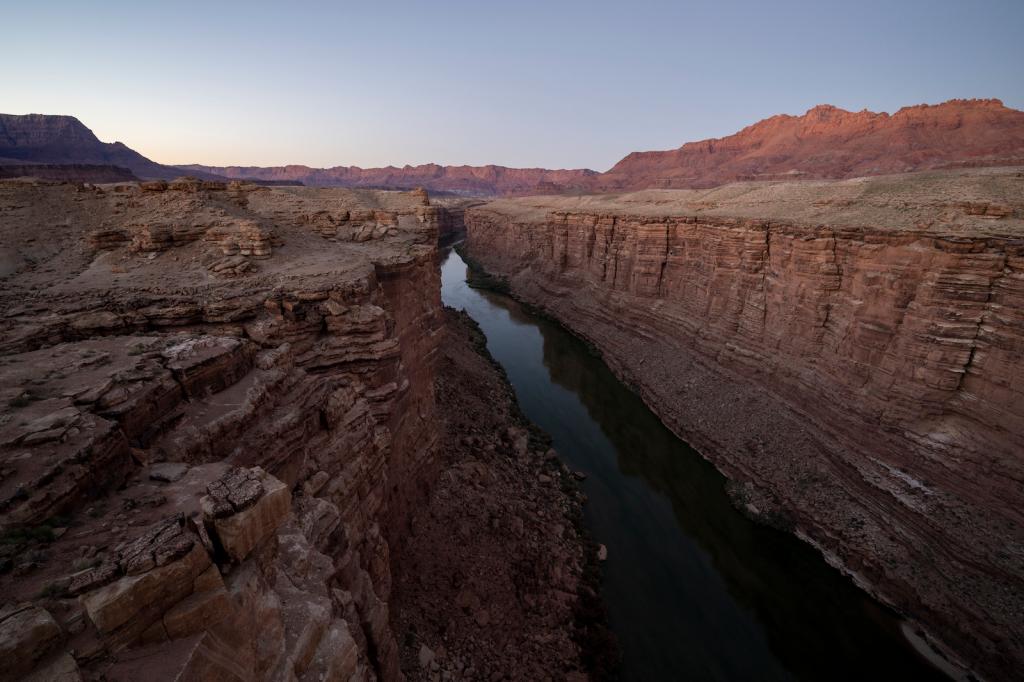 Wind power is a key climate solution. It is one of the few zero-carbon supply options that can plausibly provide more than one of the 14 or so “wedges” we need to stabilize below 450 ppm of CO2 (see “Is 450 ppm politically possible? Part 2: The Solution“). I plan to go through all of the major solutions this year.
Wind power is a key climate solution. It is one of the few zero-carbon supply options that can plausibly provide more than one of the 14 or so “wedges” we need to stabilize below 450 ppm of CO2 (see “Is 450 ppm politically possible? Part 2: The Solution“). I plan to go through all of the major solutions this year.
The stunning new Bush administration report, 20% Wind Energy by 2030 (discussed here), convinced me it was time to write a long piece, which has just been published in Salon. The article — “Winds of change: The U.S. can greatly boost clean wind power for 2 cents a day. Now all we need is a president who won’t blow the chance” — explains the more than 2,000-year history of wind power, how conservatives cost America the chance to be the world wind leader, and why the global industry is so successful in spite of our government’s relative apathy:
From 2000 to 2007, the industry increased fivefold in size. Last year, $36 billion in wind investments were made around the world, with $9 billion invested in U.S.-based projects. In 10 years, it is expected to nearly quadruple in size.
Yes, I know, most of the media attention goes to a few high-visibility debates about putting wind in places like the waters off Cape Cod. But most installations are a welcome source of revenue to farmers and landowners. In fact, because the new wind turbines are tall, and don’t interfere significantly with grazing or farming, they have become popular in the central U.S., where the wind resource is best in the country. Some ranchers make half a million dollars a year by leasing only a fraction of their land for turbines.
Surprisingly, the top state for wind farms is no longer California, as of 2006:
By the end of 2007, [Texas] had installed 4.4 GW compared to California with 2.4 GW. By the end of March, Texas had 5.3 GW. Again, this has been driven by the wind tax credit and a strong state mandate. A year ago, the Texas Public Utility Commission approved transmission lines that could deliver up to 25 GW of wind by 2012 …
Why the explosive growth? The short answer is price. New wind farms are currently offering power at 4 to 8 cents a kilowatt hour, including the federal wind tax credit. Even without the credit, and with the recent price rise that most power sources have seen, wind power is delivering power at 7 to 10 cents/kWh. The price of new wind farms has risen 30 percent to 40 percent in the last few years for two reasons. First, commodity prices have soared. Second, most wind turbine manufacturing is in Europe, and the dollar has plummeted compared to the euro. As of 2007, America had about 18 percent of total global installed capacity and about the same fraction of the wind manufacturing business.
Ironically, the plunging dollar has done for the domestic industry what conservatives refused to do — make this country the place to build new wind manufacturing capacity. In the last few years, the percentage of U.S. wind equipment installed here but manufactured abroad has dropped from 70 percent to 50 percent, and that drop is projected to continue, which should help stabilize wind costs.
The recent Bush administration report doesn’t explain how to get to 20% wind power by 2030, mainly because they don’t like any of the answers, but it is kind of obvious:
We mostly need a cap and trade system that results in a significant price for carbon. While waiting, we should extend the production tax credit for at least five years (until it is permanently sunsetted) to give the industry some consistency. At that point, a 20 percent (or higher) national renewable electricity standard for utilities would become the key policy support, at least until carbon was significantly more than, say, $50 a ton.
Fortunately, the next election will allow us to replace Bush with someone who supports all of those policies. Hint: It’s not the Francophile who wants to spend trillions making nuclear power 80% of our power.
Related Posts:
- Recycled Energy — A core climate solution
- Concentrated solar thermal power — a core climate solution
- Plug-in hybrids and electric cars — a core climate solution
This post was created for ClimateProgress.org, a project of the Center for American Progress Action Fund.

